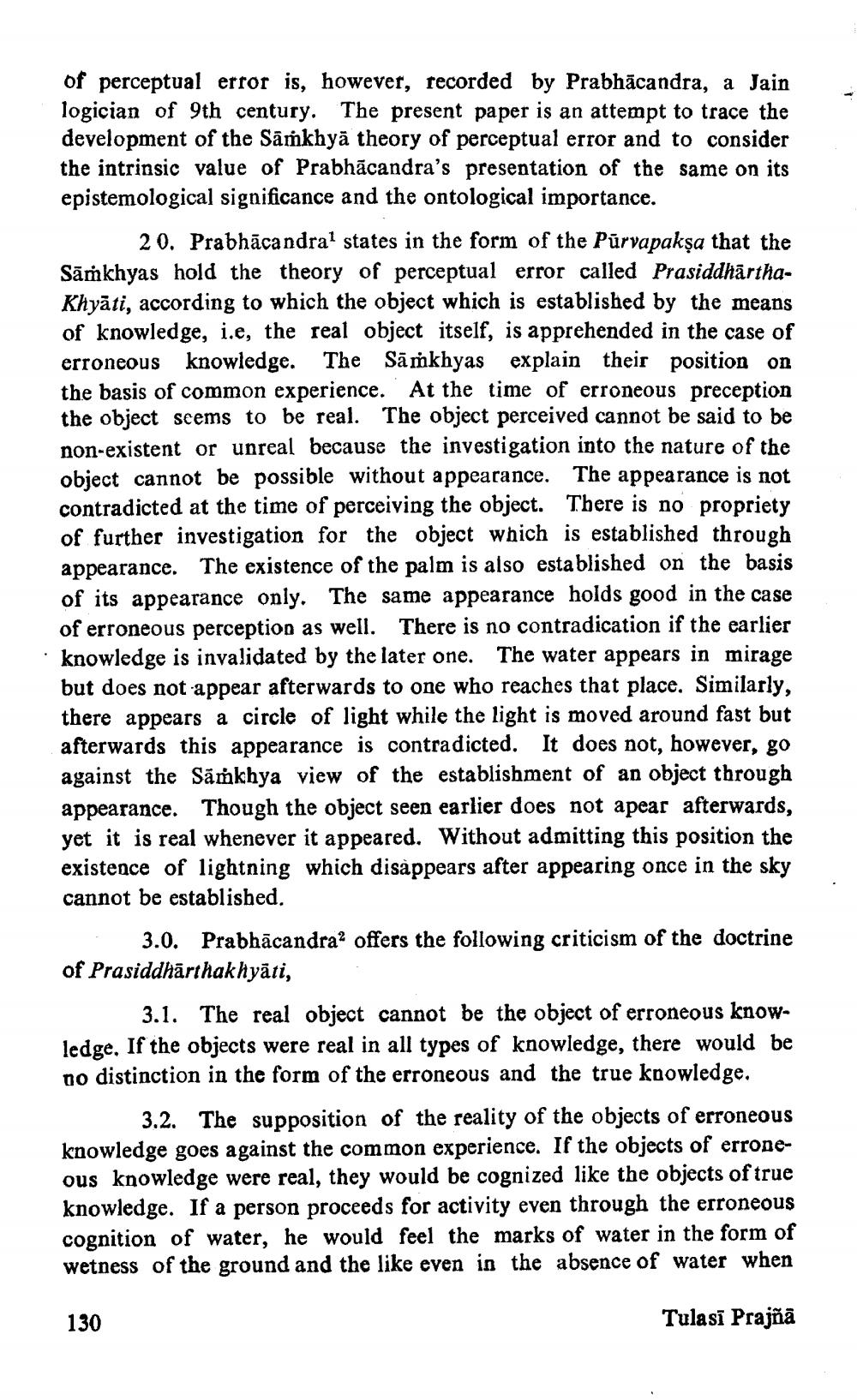________________
of perceptual error is, however, recorded by Prabhäcandra, a Jain logician of 9th century. The present paper is an attempt to trace the development of the Samkhya theory of perceptual error and to consider the intrinsic value of Prabhācandra's presentation of the same on its epistemological significance and the ontological importance.
20. Prabhācandra1 states in the form of the Purvapakṣa that the Samkhyas hold the theory of perceptual error called PrasiddharthaKhyati, according to which the object which is established by the means of knowledge, i.e, the real object itself, is apprehended in the case of erroneous knowledge. The Samkhyas explain their position on the basis of common experience. At the time of erroneous preception the object seems to be real. The object perceived cannot be said to be non-existent or unreal because the investigation into the nature of the object cannot be possible without appearance. The appearance is not contradicted at the time of perceiving the object. There is no propriety of further investigation for the object which is established through appearance. The existence of the palm is also established on the basis of its appearance only. The same appearance holds good in the case of erroneous perception as well. There is no contradication if the earlier knowledge is invalidated by the later one. The water appears in mirage but does not appear afterwards to one who reaches that place. Similarly, there appears a circle of light while the light is moved around fast but afterwards this appearance is contradicted. It does not, however, go against the Samkhya view of the establishment of an object through appearance. Though the object seen earlier does not apear afterwards, yet it is real whenever it appeared. Without admitting this position the existence of lightning which disappears after appearing once in the sky cannot be established.
3.0. Prabhācandra2 offers the following criticism of the doctrine of Prasiddharthakhyāti,
3.1. The real object cannot be the object of erroneous knowledge. If the objects were real in all types of knowledge, there would be no distinction in the form of the erroneous and the true knowledge.
3.2. The supposition of the reality of the objects of erroneous knowledge goes against the common experience. If the objects of erroneous knowledge were real, they would be cognized like the objects of true knowledge. If a person proceeds for activity even through the erroneous cognition of water, he would feel the marks of water in the form of wetness of the ground and the like even in the absence of water when
Tulasi Prajñā
130




